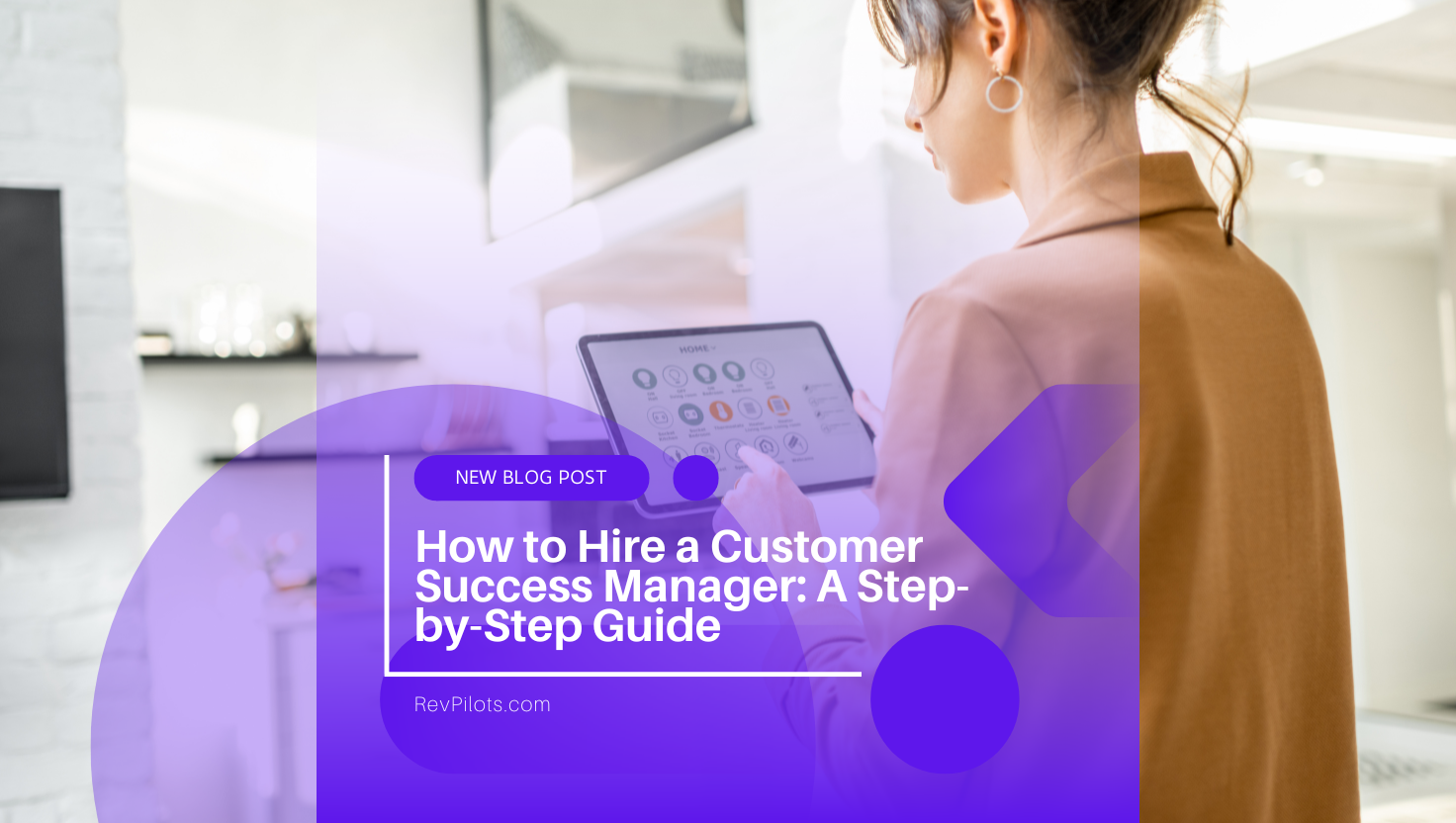Hiring a customer success manager can actually be a make or break move for your business expansion, with a direct impact on customer retention and revenue growth. This CSM needs to be a unique blend of technical expertise and people skills, making them a tricky but super valuable hire.
A customer success manager’s role is multifaceted, requiring them to be adept at managing relationships, understanding customer needs, and navigating very complex technical systems.
Finding someone who checks all these boxes can be tough, but the payoff is worth the effort. A skilled customer success manager can help you identify areas where your customers are struggling and develop strategies to address these issues, ultimately leading to increased customer satisfaction and loyalty. By prioritizing this role and finding the right person, you can set your business up for long-term success.
Before You Start Your Hiring Process:
To find the right Customer Success Manager, it’s crucial to start by defining the role and its key responsibilities clearly. This foundation helps attract candidates who are a good fit. When searching for the ideal candidate, look for a mix of technical skills and soft skills – a balance that’s vital for success in this position. The ability to solve problems is also a key aspect to evaluate in candidates, as it directly impacts their potential to drive results.
How to Hire a Customer Success Manager: A Step-by-Step Guide for 2025
Hiring a Customer Success Manager (CSM) is one of the smartest investments a growth-focused business can make. CSMs are the bridge between your product and your customer’s long-term success—ensuring satisfaction, retention, and revenue expansion.
But how do you find a candidate who can truly move the needle?
In this guide, you’ll learn exactly how to hire a Customer Success Manager who’s not just capable—but a catalyst for growth.
What Does a Customer Success Manager Actually Do?
Before you hire, you need a clear understanding of what a CSM does in your business. Customer Success isn’t one-size-fits-all.
A CSM typically:
-
Onboards new customers
-
Drives product adoption
-
Solves problems proactively
-
Builds long-term relationships
-
Helps reduce churn and expand revenue
Stat: Companies with strong customer success programs see a 27% lower churn rate compared to those without one (Totango).
ChurnZero vs Totango vs Something Else for Start-up?
byu/Markenheimer15 inCustomerSuccess
Step 1: Define the Role in Context
Your product, customer base, and sales model should dictate the role’s scope.
Ask yourself:
-
Is this a high-touch or tech-touch CSM role?
-
Will the CSM manage renewals or just adoption?
-
Do you expect them to handle support tickets or just strategic check-ins?
Pro Tip: Align the job scope with your customer journey map so your CSM can influence the moments that matter most.
Step 2: Write a Compelling, Clear Job Description
Skip the buzzwords and get specific.
What to include:
-
Role objectives: e.g., “Reduce churn by 15% within the first 12 months”
-
Key responsibilities: Onboarding, QBRs, upsells, retention campaigns
-
Required skills: CRM knowledge, strong communication, analytical mindset
-
Company mission & customer philosophy
Step 3: Look for the Right Blend of Skills
A great CSM is part strategist, part relationship builder.
Must-have qualities:
✅ Empathy and active listening
✅ Strong communication and presentation skills
✅ Data fluency (can interpret usage trends, churn signals)
✅ Proactive mindset
✅ Customer-centric problem solving
Stat: 80% of customers say the experience a company provides is as important as its products or services (Salesforce).
Step 4: Build a Structured Interview Process
Ditch the vague “vibe check” interviews and use a repeatable system.
Interview flow:
-
Phone Screen: Gauge communication style and motivation
-
Role-Play Scenario: Test their ability to handle a tough client conversation
-
Case Study Review: Analyze a customer health score and create an action plan
-
Team Interview: Ensure cultural and cross-functional fit
-
Executive Interview: Assess long-term alignment and initiative
Tip: Include real customer data (anonymized) in exercises to simulate the real role.
Step 5: Nail the Onboarding
Once you’ve made the hire, don’t just toss them in Slack and hope for the best.
Successful onboarding includes:
-
A clear 30-60-90 day plan
-
Deep dives into customer personas and pain points
-
Hands-on product training
-
Shadowing sessions with Sales and Support
-
A success playbook with email templates, checklists, and KPIs
Stat: Organizations with structured onboarding improve new hire productivity by 70% (Glassdoor).
Final Tips for Hiring a CSM Who Sticks in 2025 and Beyond
-
Offer a growth path—CSMs often move into leadership or account management
-
Share customer wins internally—celebrate their impact
-
Create alignment between CSMs and Sales/Support so handoffs feel seamless
Remember: CSMs don’t just protect revenue—they create it.
Related: Once you have successfully recruited and hired your ideal customer success manager, make sure they have the best tools – their success is your success!



